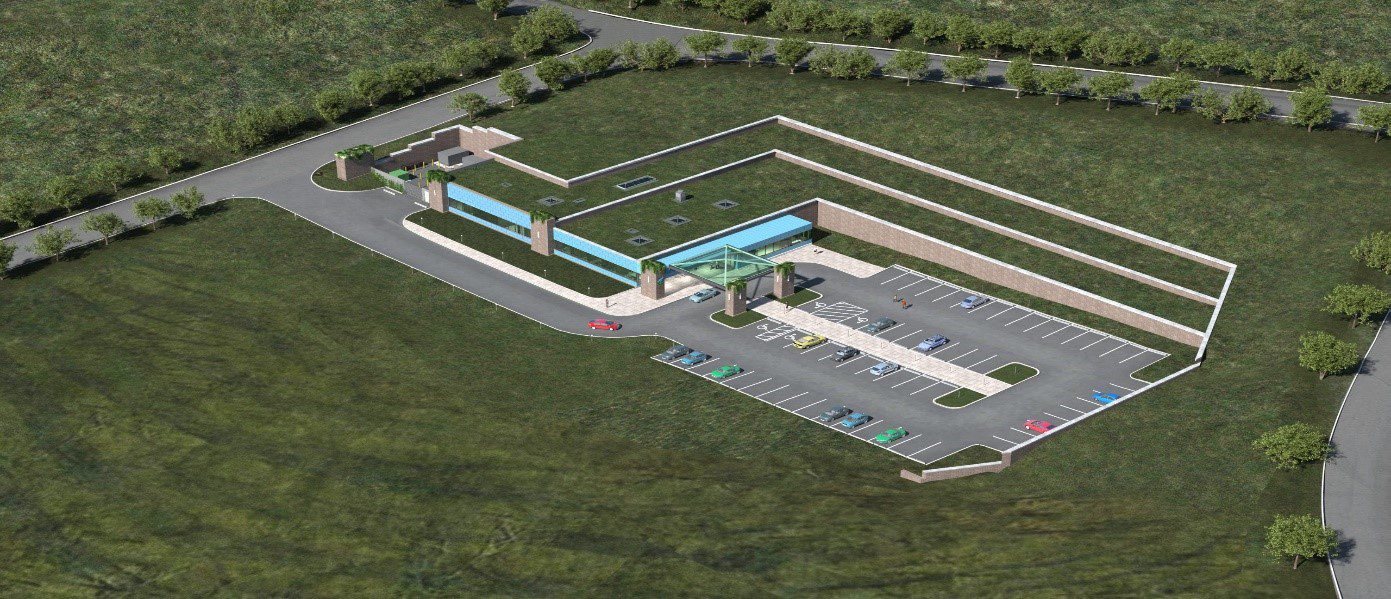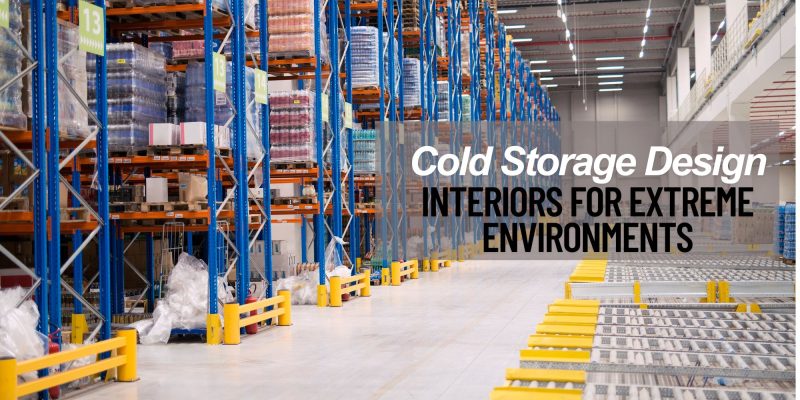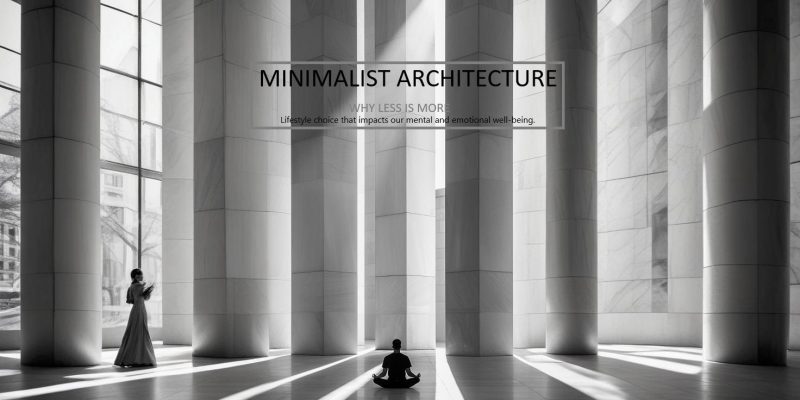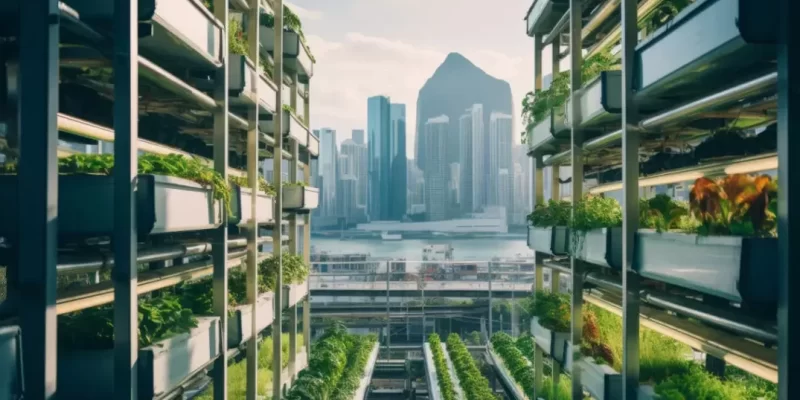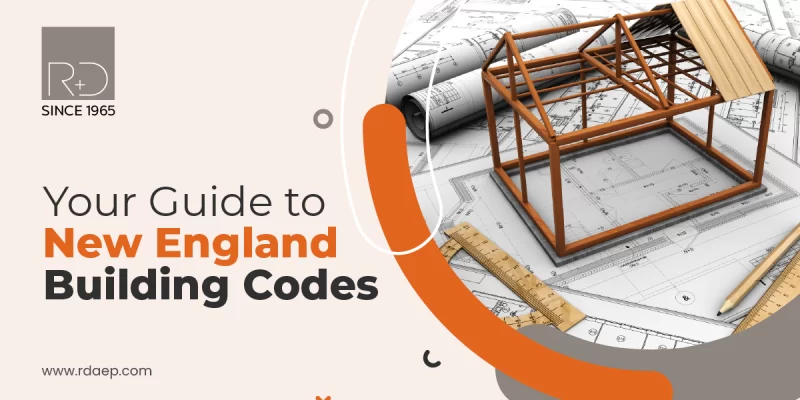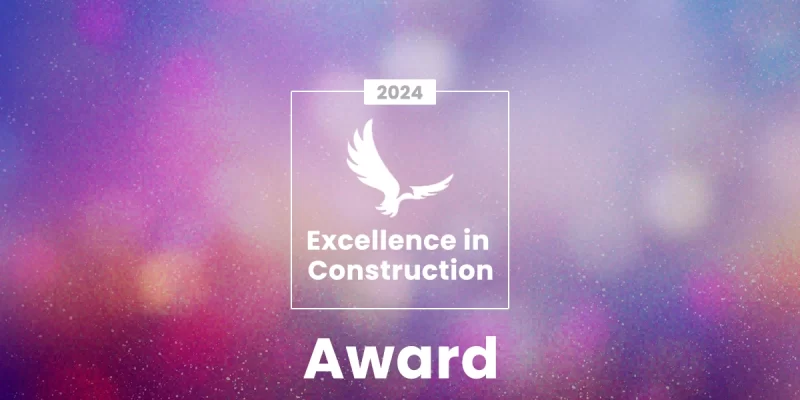As the construction industry shifts toward eco-friendly practices, the idea of Net Zero has become a big deal for architects, builders, and policymakers. But what does it actually mean for a building to be Net Zero?
In simple terms, a Net Zero building produces as much energy as it uses over the course of a year. This is done by making the building more energy-efficient, using renewable energy sources like solar or wind power, and choosing sustainable materials that are better for the environment. But Net Zero isn’t just about energy—it’s also about reducing carbon emissions, both from the energy used to run the building and the materials used to construct it.
Buildings account for nearly 42% of global CO₂ emissions, making them one of the biggest contributors to climate change. As cities grow and we continue relying on fossil fuels, buildings are leaving an even larger carbon footprint. But with advances in green technology, cleaner energy sources, and low-carbon materials, we have a real chance to change that.
This blog will break down what Net Zero actually means, why buildings have such a big impact on the environment, and what we can do to make them more sustainable. Whether you’re into architecture, construction, or just want a greener future, understanding Net Zero is an important step forward. Let’s dive in!
Understanding Net Zero: Meaning and Importance
Net Zero Meaning:
A Net Zero building (also known as Zero Net Energy Homes) is a structure that produces as much energy as it consumes over the course of a year. This is typically achieved through energy-efficient design, renewable energy sources, and sustainable building materials.
Net Zero Emissions:
A Net Zero emissions building goes beyond energy balance and also ensures that its carbon footprint over time is minimized—both in operational emissions (from energy use) and embodied emissions (from construction materials and processes).
The Carbon Footprint of Buildings Over Time: A Detailed Breakdown
1. The Built Environment's Impact on Global CO₂ Emissions
The built environment—which includes all human-made structures like homes, offices, factories, and infrastructure—accounts for nearly 42% of global carbon dioxide (CO₂) emissions. These emissions come from:
• Operational energy use (heating, cooling, lighting, appliances).
• Embodied carbon (emissions from the manufacturing, transportation, and disposal of building materials).
Because of these factors, buildings are among the biggest contributors to climate change, making it crucial to reduce their carbon footprint.
2. How the Carbon Footprint of Buildings Has Grown Over Time
Over the past century, the carbon footprint of buildings has increased dramatically due to:
• Greater reliance on fossil fuel-based energy (coal, gas, and oil).
• A shift from natural materials (wood, stone, clay bricks) to energy-intensive materials (steel, concrete, glass).
• Increased use of mechanical systems (HVAC, artificial lighting, and water heating) rather than passive strategies.
• Rapid urbanization and population growth leading to higher demand for buildings.
This means that, decade by decade, buildings have required more energy and materials, leading to higher CO₂ emissions.
3. Pre-1950 vs. Current Buildings: A Carbon Footprint Comparison
If we compare pre-1950 buildings to modern buildings, there is a noticeable difference in carbon emissions: Older Buildings (Pre-1950) – Lower Carbon Footprint:
• Designed with passive cooling and heating in mind.
• Thicker walls provided insulation, reducing heating/cooling needs.
• Natural ventilation (high ceilings, open courtyards, cross-ventilation).
• Built using local, low-carbon materials like stone, timber, and clay.
Modern Buildings (Post-1950 to Present) – Higher Carbon Footprint:
• Depend on HVAC systems for temperature control, increasing energy consumption.
• Use carbon-intensive materials like steel, cement, and aluminum.
• Require constant artificial lighting due to design choices.
• Often have high levels of waste during construction and demolition.
The result? Current buildings have a much larger carbon footprint than older ones. However, new technologies and sustainable practices are starting to reverse this trend.
4. Carbon Footprint by Decade: The Shift Towards Carbon Zero
Each decade has seen an increase in emissions—but in recent years, there has been a shift toward sustainability:
• 1950s-1970s: Rapid urbanization, growth of glass-and-steel skyscrapers, widespread use of energy-hungry air conditioning.
• 1980s-1990s: More insulation and energy efficiency standards introduced, but fossil fuel dependency remained high.
• 2000s-2010s: Green building certifications (LEED, Passive House) gain traction, increasing awareness of low-carbon materials.
• 2020s-Present: Growth of Net Zero Energy and Zero Net Energy Homes, focus on carbon zero initiatives, widespread use of low carbon building materials.
Thanks to new materials, smart technology, and better design strategies, the carbon footprint of buildings is finally starting to decrease in some areas.
Key Principles for Achieving Net Zero in Buildings – Detailed Explanation
To achieve Net Zero Energy and Net Zero Emissions, buildings must be designed and operated to minimize energy use, reduce carbon emissions, and utilize renewable energy sources. Below is a detailed breakdown of the core principles:
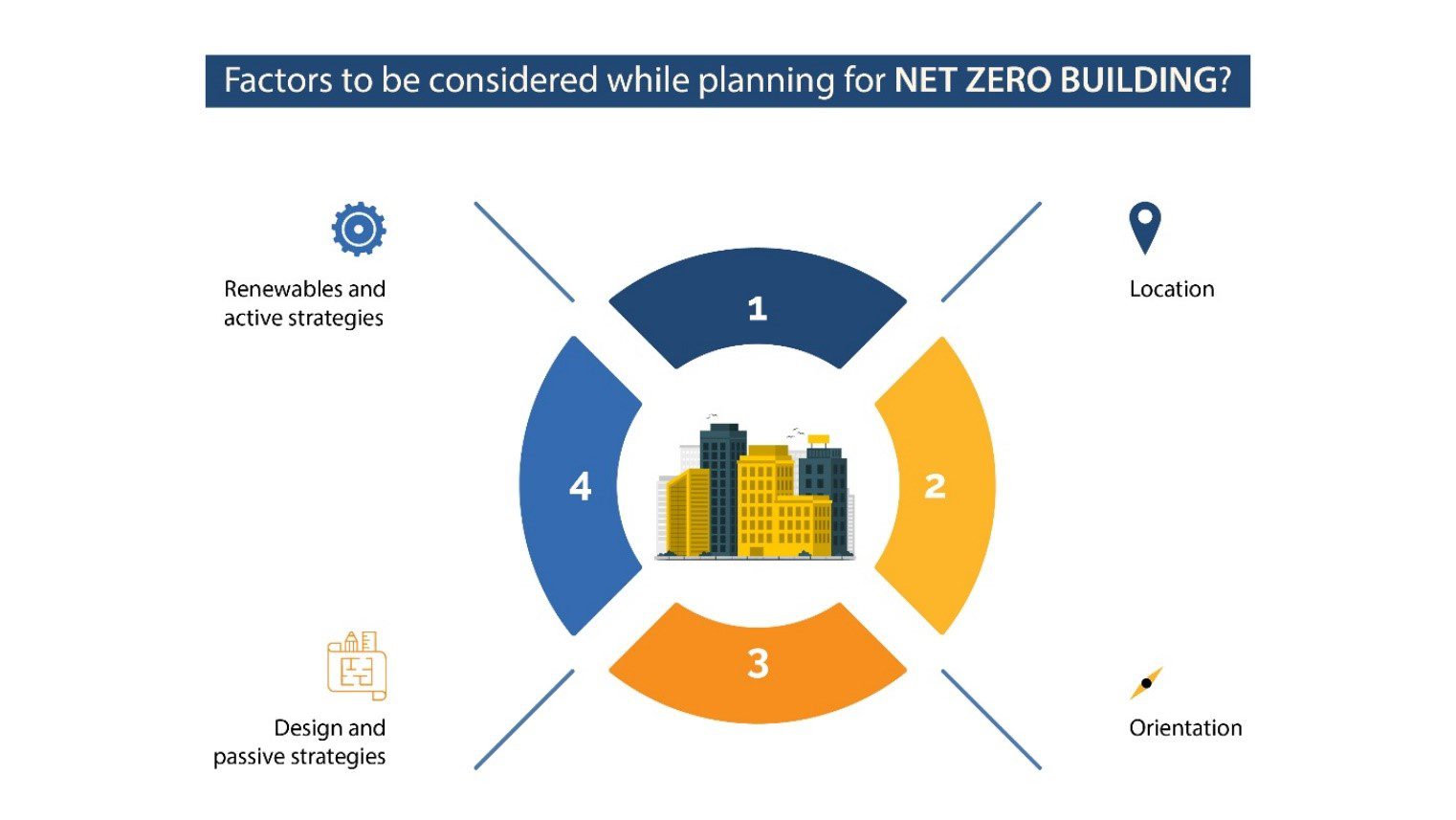
A. Energy Efficiency First
The first step to achieving Net Zero is reducing the energy demand of a building. The less energy a building consumes, the easier it becomes to generate enough renewable energy to balance its consumption.
1. Passive Design Strategies (Using natural elements to reduce energy needs)
Orientation
• Buildings should be positioned to maximize daylight and natural ventilation.
• In cold climates, south-facing windows can capture more sunlight to provide natural heating.
• In hot climates, strategic shading (overhangs, trees) prevents overheating.
Insulation
• High-quality insulation reduces the need for artificial heating and cooling.
• Well-insulated roofs can cut energy consumption by up to 50%.
• Materials like spray foam, rigid board insulation, and aerogels offer high thermal resistance.
Windows & Glazing
• Low-E glass (low-emissivity) reduces heat transfer, keeping interiors warm in winter and cool in summer.
• Double or triple glazing improves insulation and reduces heat loss.
• Smart window placement enhances daylight while reducing reliance on artificial lighting.
2. Efficient Systems & Technologies (Using advanced technologies to optimize energy use)
LED Lighting
• Residential LED lighting Uses 75% less energy and lasts 25 times longer than incandescent bulbs.
High-Efficiency HVAC Systems
• Traditional HVAC systems consume massive amounts of energy.
• Modern heat pumps, radiant floor heating, and VRF (Variable Refrigerant Flow) systems drastically reduce energy use.
Heat Recovery Systems
• Energy Recovery Ventilators (ERVs) and Heat Recovery Ventilators (HRVs) recycle heat from outgoing air, reducing heating and cooling loads.
Smart Building Controls
• Automated lighting, temperature, and shading systems optimize energy use in real time.
• AI-driven systems can predict energy demand and adjust accordingly.
B. On-Site Renewable Energy
Once a building is energy-efficient, the next step is generating clean energy on-site to offset the remaining energy use.
Solar PV Panels
• The most common solution for Zero Net Energy Homes.
• Solar energy can power everything from lighting to heating and cooling systems.
• Battery storage ensures excess energy is saved for later use.
Wind Turbines
• Suitable for large-scale buildings or rural areas with strong wind resources.
• Small vertical-axis wind turbines can be installed on rooftops.
Geothermal Heating & Cooling
• Utilizes the stable underground temperature (50-60°F) to provide heating in winter and cooling in summer.
• Highly efficient and reduces energy consumption by 70%.
C. Low Carbon Building Materials & Sustainable Construction
Building materials account for a significant share of emissions, so using low-carbon alternatives is essential.
Cross-Laminated Timber (CLT)
• A strong, sustainable alternative to concrete and steel.
• Stores carbon instead of emitting it.
Recycled Steel and Concrete
• Reduces embodied carbon emissions by repurposing materials instead of producing new ones.
Hempcrete & Bio-Based Insulation
• Hempcrete: A mix of hemp fibers, lime, and water, offering excellent insulation and carbon absorption.
• Wool, cotton, and mycelium-based insulation provide eco-friendly alternatives to fiberglass.
Modular Construction & Prefabrication
• Pre-built components reduce material waste and energy use during construction.
• Prefab homes can be designed for energy efficiency before installation.
D. Electrification & Decarbonization
The goal is to eliminate fossil fuel use in buildings and replace it with clean energy.
Transition from Gas-Powered to All-Electric Buildings
• No more gas stoves, water heaters, or furnaces—replace them with electric induction cooktops, heat pump water heaters, and electric HVAC systems.
• Electric-powered buildings can be fully powered by renewable energy, leading to Net Zero Emissions.
Heat Pumps Instead of Traditional Furnaces
• Air-source heat pumps (ASHP) and ground-source heat pumps (GSHP) use a fraction of the energy of gas furnaces.
• Can provide both heating and cooling, making them highly efficient.
E. Smart Water & Resource Management
Water conservation is essential for sustainable buildings.
Rainwater Harvesting & Greywater Recycling
• Collects rainwater for landscaping, toilets, and other non-drinking purposes.
• Greywater (from sinks, showers, and washing machines) can be filtered and reused to reduce freshwater demand.
Water-Efficient Fixtures
• Low-flow toilets, faucets, and showerheads minimize water usage.
• Smart irrigation systems adjust water use based on soil moisture and weather conditions.
How to Make Buildings Net Zero
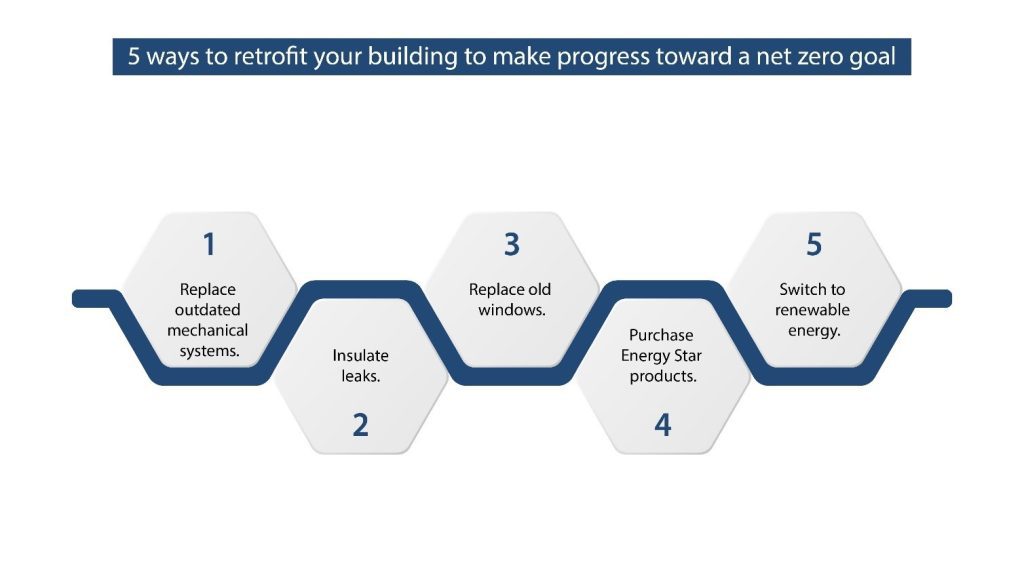
Net-zero buildings produce as much energy as they use, which helps fight climate change.
Here’s how we can achieve that:
1. Use Less Energy
• Smart Building Design – Position windows for natural light, use good insulation, and seal leaks to keep heat in or out.
• Energy-Saving Tech – Install LED lights, efficient heating & cooling systems, and appliances that use less power.
2. Use Clean Energy
• Solar & Wind Power – Install solar panels on rooftops or small wind turbines.
• Geothermal Systems – Use underground heat to warm and cool buildings efficiently.
• Batteries – Store extra solar or wind energy for later use.
3. Choose Better Building Materials
• Low-Carbon Materials – Use wood, recycled steel, or eco-friendly concrete instead of traditional materials.
• Reuse Old Materials – Salvage materials from old buildings to cut down waste and emissions.
• Local Materials – Transporting materials long distances adds to pollution, so use local sources when possible.
4. Use Smart Technology
• Automated Systems – Smart thermostats and motion sensors adjust heating, cooling, and lights automatically.
• AI & Smart Data – Predict energy use and improve efficiency with smart technology.
5. Reduce Hidden Carbon Footprint
A lot of emissions come from making and transporting building materials. To reduce this:
• Recycle & Reuse Materials – Give old materials a second life instead of making new ones.
• Pick Low-Carbon Products – Choose materials with certifications that show they’re eco-friendly.
• Offset Carbon Emissions – Support projects that remove carbon from the air (like tree planting).
6. Save Water & Reduce Waste
• Rainwater Collection – Store rainwater for things like watering plants.
• Greywater Recycling – Reuse water from sinks and showers for flushing toilets or irrigation.
• Reduce Construction Waste – Plan to use materials efficiently and recycle leftover scraps.
7. Follow Green Building Standards
• Certifications like LEED, Passive House, and Living Building Challenge ensure buildings are truly sustainable.
• Follow Net Zero Energy Building (NZEB) guidelines and local sustainability rules.
8. Upgrade Old Buildings
New buildings aren’t the only ones that can be net zero! Older buildings can be updated with:
• Better Insulation & Windows – Keeps energy use low.
• Renewable Energy Systems – Like solar panels.
• Smart Energy Controls – Make heating, cooling, and lighting more efficient.
Parting Thoughts
Switching to Net Zero buildings isn’t just a passing trend—it’s a game-changer for cutting carbon emissions and protecting our planet. These buildings use less energy, run on renewable sources like solar and wind, and are built with eco-friendly materials. Plus, smart technology makes them even more efficient, reducing waste and saving money over time.
At Russell and Dawson, we’re all about building a greener future. With years of experience in architecture and construction, we help clients create energy-efficient spaces that meet Net Zero standards. Whether you’re starting fresh or upgrading an existing building, we bring innovative solutions to make sustainability simple.
Ready to take the next step? Let’s build something smarter, greener, and better—together. Get in touch with Russell and Dawson today!
